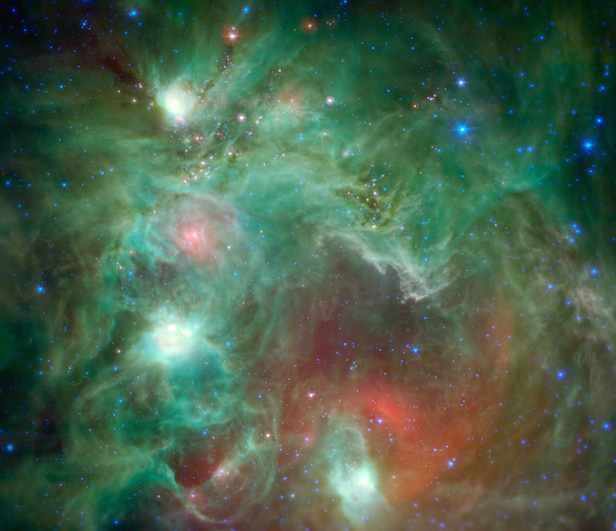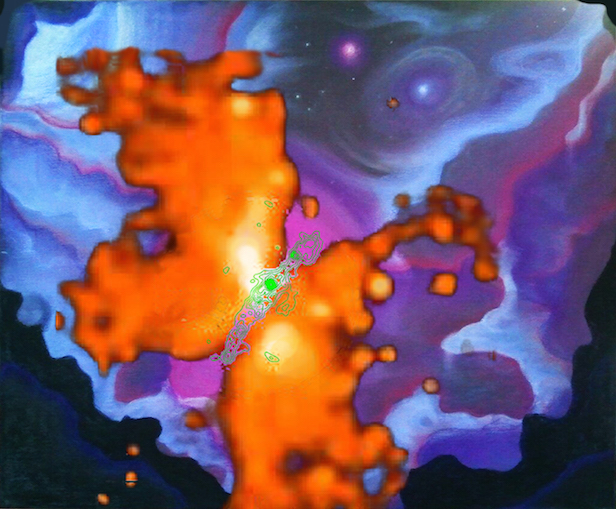Unexpected nitrogen discovered in ‘butterfly-shaped’ star cloud
The stellar formation area has a peculiar section of compounds

These stars shrouded by dust and gas can show how our Sun was originally made. Image credit: NASA/JPL-Caltech
There is a particular star forming region in the Milky Way, labelled G35.20-0.74N, that has shown to have an unusual region, excessively filled with nitrogen compounds. This section is in the southeast of the butterfly-shaped disc, with a little bit also present in the northwest. The presence of nitrogen compounds being segregated from the rest of the disc has raised some questions, which these astronomers plan to investigate.
This study came from an international team led by Dutch scientists, and presented by the Netherlands Research School for Astronomy (NOVA). Using the Atacama Large Milimeter/submilimeter Array (ALMA), based in Chile’s Atacama Desert, these astronomers delineate molecular gas clouds that show signs of star formation within.
This particular disc showed large amounts of oxygen-containing and sulphur-containing hydrocarbons throughout. It was the nitrogen that caused the most mystery, as not only was it present in a particularly small region, but the temperature was 150 degrees hotter than the rest of the disc.

This is an artist impression of the butterfly star forming region, overlaid in green is the scientists’ observations. Image credit: Veronica Allen/Alexandra Elconin
Based on these observations, the scientists suspect that there are multiple stars being formed in this district simultaneously. The mass and temperature of these stars could be varied wildly, but scientists expect it to fragment into smaller discs as the stars form.
Floris can der Tak, a submillimeter scientist at the Space Research Organisation of the Netherlands, says: “Many of the nitrogen molecules are poisonous cyanides. We do not know much about them because it is dangerous to work with those molecules in laboratories on Earth.”
Astronomers are now investigating this cloud in more detail now, the aim is to make models to see how the change in the age, mass, temperature and density of the gas can cause this difference in chemical composition.
Keep up to date with the latest space news in All About Space – available every month for just £4.99. Alternatively you can subscribe here for a fraction of the price!




